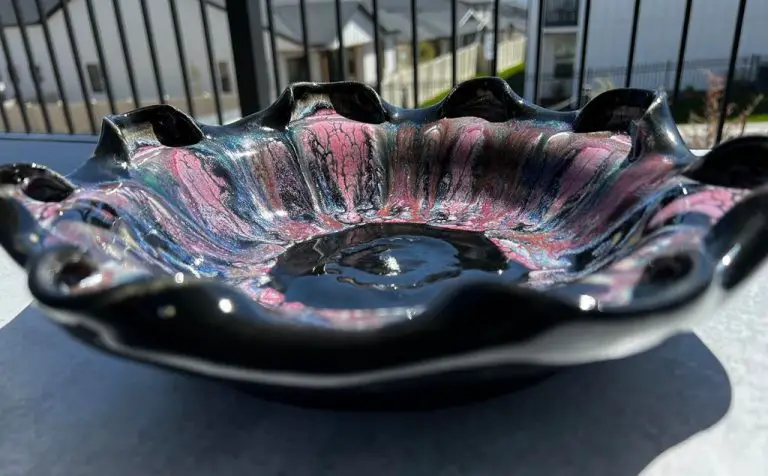How Do You Change The Color Of Clay?
Clay is a natural material that is smooth and malleable when wet, but hardens when baked at high temperatures. The physical properties of clay make it an ideal material for crafting pottery, sculpture, and decorative items. Clay’s ability to be shaped and molded while soft, then hardened into a permanent form, allows artisans to create beautiful objects by hand.
While natural clay can be used in its raw form, most potters and crafters color their clay creations. Adding color serves both aesthetic and functional purposes. Vibrant colors make pottery and sculptures more visually striking. Color can also be used to mark different types of ware, like red clay for terra cotta pots and blue clay for decorative tiles. Coloring clay provides endless options for artists to make their pieces unique.
Natural Clay Colors
Clay is formed from ancient, weathered rock composed mainly of decomposed feldspar, silica, and other minerals. As this rock erodes, the minerals impart color to the resulting clay deposits. Natural clay is found in a range of earthy hues based on its mineral composition and geography.
Common colors include various shades of red, brown, yellow, white, and gray. Red and brown clays get their coloring from iron oxide, which produces rusty and brick red hues. Lighter yellow and white clays contain less iron and more kaolinite, resulting in paler tones. The most common source of white kaolin clay is found in southeastern states like Georgia and South Carolina.
Dark gray clays occur when there is more carbonaceous material present, such as particles from decomposed plant matter. Brightly colored clays like deep orange and blue come from higher concentrations of certain minerals. For example, blue clay deposits are found in central and northern California.
Staining with Oxides
Oxides are compounds made of metals combined with oxygen molecules. Many naturally occurring metal oxides have bright, saturated colors and can be used to stain clay. When mixed into clay, oxides chemically bond with the clay body during firing, creating vibrant, concentrated colors that are integrated throughout the clay.
Some common oxides used for staining clay include:
- Iron oxide – Produces earthy tones ranging from light yellow to deep orange and red.
- Cobalt oxide – Creates blues from light sky blue to deep navy.
- Copper oxide – Generates greens and turquoises.
To stain clay with oxides, mix dry oxide pigment powder into dry clay. Use 1-10% oxide by weight depending on the intensity of color desired. Mix thoroughly to distribute the oxide evenly throughout the clay body. The stained clay can then be shaped as desired and fired as normal. Firing allows the oxide particles to penetrate the clay permanently.
Staining with Other Pigments
In addition to metal oxide stains, some other non-oxide pigments can be used to color clay as well. Two common options are carbon black and chromium oxide green. Carbon black produces deep black and dark gray colors, while chromium oxide creates bright greens and yellow-greens.
Compared to metal oxide stains, carbon and chromium pigments produce more vivid, intense colors on clay. The downside is that they tend to be less colorfast at high temperatures. Carbon black can burn away entirely if fired too hot, while chromium oxide often fades or changes color after firing.
For these reasons, carbon and chromium pigments are best used cautiously in low-fire clay coloring. Oxide stains tend to be more stable across different temperature ranges. However, for striking black or bright green accents, non-oxide pigments can be a useful option.
Tinting with Underglazes
Underglazes are ceramic coloring products used to tint clay before firing. They are made from pigments suspended in a flux medium and come in a wide variety of matte colors. Underglazes are opaque, so they can be used to completely change the original color of the clay.
To tint clay with underglazes, the coloring is simply brushed or sponged onto the bisqueware piece before it goes into the kiln. The underglaze sinks into the porous clay body and integrates with it, producing a saturated, even color. When clear glaze is applied on top and the piece is fired again, the underglaze becomes sealed and permanent beneath the glaze.
Common underglaze colors include bright primary hues like red, blue, yellow, as well as earthy tones like brown, green, orange and black. Underglazes can be blended to create custom colors. Often ceramic artists use underglazes to provide a base tint for the clay, then add further decorative effects like hand-painting.
Painting with Underglazes
Underglazes are colored glazes that can be brushed or painted directly onto raw clay before firing. Underglazes are a great way to add intricate designs, patterns, and color onto clay pieces. Unlike glazes, underglazes do not melt and flow during firing, allowing the painted design to remain in place.
Here are some tips for working with underglazes:
- Apply underglazes to bone dry or bisque fired clay. Underglazes will not adhere as well to wet clay.
- Use soft bristle brushes to paint fine details and small brushes for outlines. Sponges or rags can be used for larger areas of color.
- Underglazes can be layered on top of each other much like painting. Allow each layer to dry before adding another color on top.
- Add multiple layers for richer, deeper colors. Start with lighter colors and work up to darker shades.
- Mix colors on a palette to create custom hues before applying to the clay.
- Outline designs first with a darker color, then fill in with lighter colors. Or vice versa.
- Use masking tape or stickers to mask off crisp edges and sharp lines.
- Consider adding patterns like dots, stripes, and geometric shapes.
- Practice painting on a tile first to test colors and brush techniques.
With a variety of brushes and underglaze colors, intricate designs can be painted by hand onto clay pieces before firing. Varying brush techniques, mixing custom colors, and layering underglazes allows for limitless artistic effects.
Glazing
Glazing is one of the most popular techniques for adding color to clay. Glazes are solutions of minerals and compounds that are applied to bisqueware clay in a thin coat. They melt during the firing process, fusing to the clay body to form a smooth, durable glass surface.
The chemicals in the glaze recipe determine the color produced. Common colored glazes include:
- Blues – Made with cobalt oxide
- Greens – Made with chromium oxide
- Yellows – Made with iron oxide
- Reds and oranges – Made with copper carbonate
Glazes come in a wide variety of glossy, satin, and matte finishes. They allow for vibrant colors and effects not easily achieved with other coloring techniques. Glazes bring out the best qualities in clay by enhancing the surface and making it water-resistant.
Choosing Coloring Methods
There are a few factors to consider when deciding which clay coloring technique is best for your project:
-
Clay type – Certain coloring methods work better with specific types of clay. For example, staining is very effective on porous, unglazed clays like terracotta. Tinting and painting work well on smoother clays.
-
Firing method – If you plan to fire at high temperatures, glazes and underglazes are good options. Stains burn out at high temperatures. For low-fire clay, staining, tinting and painting are better choices.
-
Desired effects – Do you want solid colors or mottled effects? Painting gives you full control over the color design. Staining and glazing create more organic, unpredictable results.
-
Skill level – Beginners may want to start with easy techniques like staining. Painting and glazing require more practice and artistic skill.
Some key pros and cons of coloring techniques:
-
Staining – Pros: simple, random organic effects. Cons: limited color options, not as vibrant.
-
Tinting – Pros: integrates color throughout the clay body. Cons: colors can be dull, not highly controllable.
-
Painting – Pros: full artistic control. Cons: requires skill, doesn’t penetrate the clay.
-
Glazing – Pros: vivid colors, glassy effects. Cons: high-fire only, expensive, tricky application.
Experiment with different techniques on test tiles to see what works best for your project and skill level.
Combining Multiple Techniques
One of the exciting things about coloring clay is that you can combine multiple techniques to achieve unique and complex effects. Here are some tips for successfully layering different coloring methods:
Glazing over stains or oxides is a great way to add depth. The glaze will become transparent where it overlies the stain, allowing the underlying colors to show through. You can create interesting mottled or streaky patterns this way. Apply stains before bisque firing, then apply a clear glaze after bisque firing and fire again to cone temperature.
Tinting with underglazes can be done before or after applying stains or oxides. The tint will interact with the underlying colors, muting and blending with them. Try applying tints in layers, with lighter colors over darker ones, to build up depth.
Use underglaze paints to accent or contrast with stains. For example, you could stain a clay body with red iron oxide, then paint blue underglaze dots as an accent. The two color techniques will complement each other.
Take care when combining water-based media like underglazes with oil-based media like stains. Let any oil-based layers dry fully before applying water-based layers or they may repel each other. Test compatibility on a tile before applying to a finished piece.
With planning and testing, you can create amazing combinations of color techniques on your clay. Be creative and have fun seeing how layering different stains, tints, glazes and paints produce striking effects!
Conclusion
There are various techniques available for changing the color of clay depending on the desired effect. Staining with metal oxides provides a mottled effect, while underglazes allow for more precise coloring and designs. Glazing is best for bold, uniform colors. Tinting clay can produce softer or more pastel hues throughout the piece.
When deciding on a coloring method, consider the type of clay body, the desired color saturation and finish, and whether the clay will be fired. Test different techniques on clay samples before applying them to a finished piece. Underglazes and glazes require specialized firing, while stains, tints, and paints work on air-dry clay. Experiment with layering several techniques to create unique effects. The possibilities for transforming clay into vivid art are endless.


